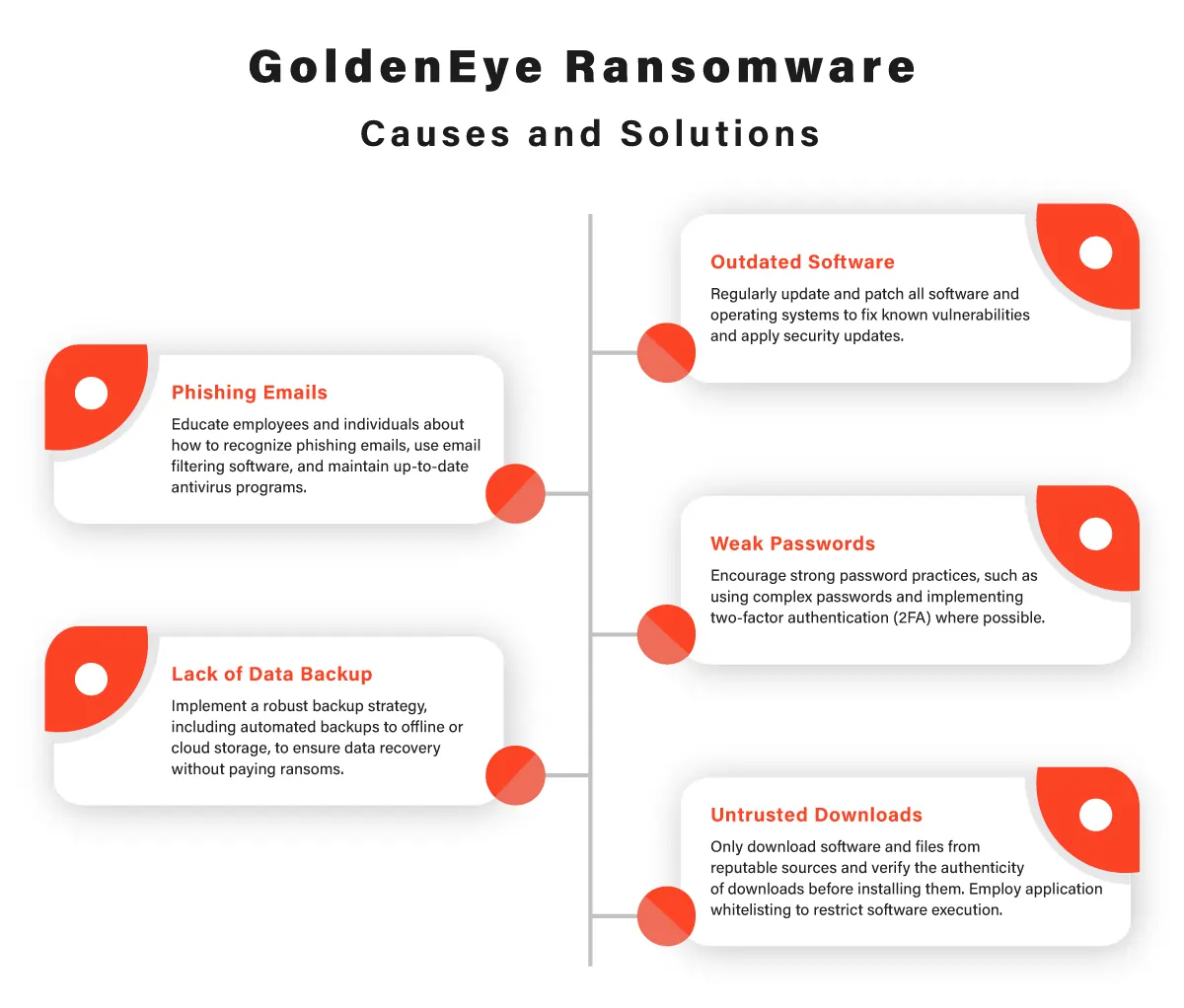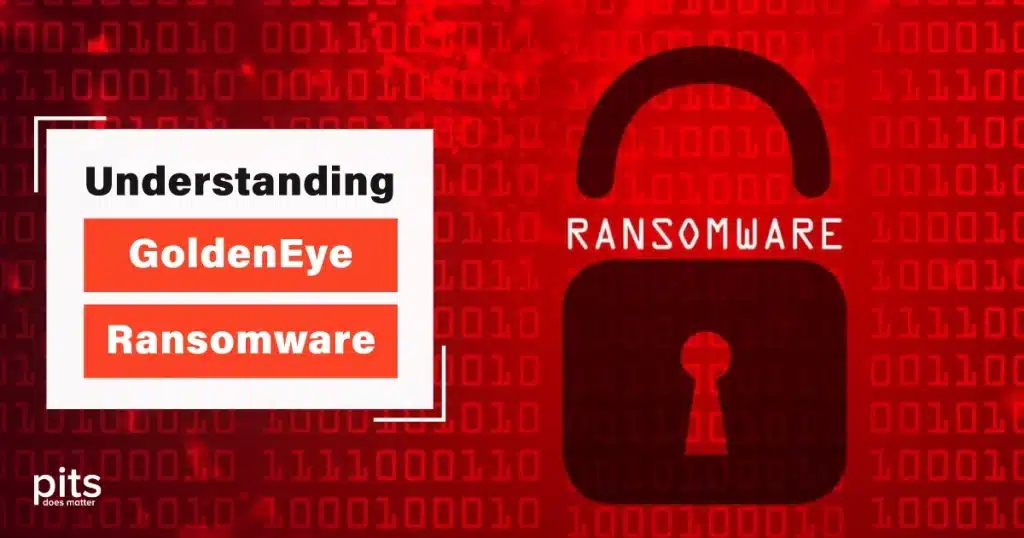In the digital age, where our lives and businesses heavily rely on technology, the emergence of ransomware attacks has sent shockwaves through cyberspace. One such notorious ransomware variant is GoldenEye, a menacing cyber threat that has disrupted individuals and organizations. In this article, we will delve into what GoldenEye ransomware is, how it operates, and crucial strategies to prevent and defend against its destructive capabilities.
What is GoldenEye Ransomware?
GoldenEye, named after the James Bond film, is a strain of ransomware belonging to the Petya and Mischa ransomware families. Like its predecessors, GoldenEye is designed to encrypt data on a victim’s computer system and demand a ransom payment in exchange for a decryption key that can potentially restore the locked files. GoldenEye was first identified in 2016 and has since become one of the most notorious ransomware strains, causing major disruptions to businesses and organizations worldwide.
The name “GoldenEye” is fitting for this malicious software as it shares similarities with its namesake. Just as James Bond’s enemies were relentless and determined to carry out their evil plans, GoldenEye acts similarly by infiltrating systems and encrypting files without mercy. The creators of GoldenEye are believed to be cybercriminals from Eastern Europe, making it challenging for law enforcement agencies to track them down.
How Does GoldenEye Ransomware Work?
GoldenEye operates with a two-stage encryption process that makes it incredibly challenging to recover data without the decryption key. The initial infection vector often involves social engineering tactics, malicious email attachments, or compromised software downloads. Once executed, GoldenEye exploits vulnerabilities in the victim’s operating system to gain access to the system.

The encryption process targets critical system structures, including the Master File Table (MFT) and the Master Boot Record (MBR). The MFT contains information about all files and directories on a system, while the MBR is essential for booting the operating system. GoldenEye encrypts both these components, rendering the operating system inaccessible.
Upon successful encryption, the victim is presented with a ransom note detailing the demands of the ransomware attacker. Victims are instructed to pay the ransom amount to a specified Bitcoin wallet in exchange for the decryption key. GoldenEye often uses a fake CHKDSK screen to mask its true malicious intent, misleading users into believing that their system is undergoing a routine disk check.
Preventing and Defending Against GoldenEye Ransomware
Regular Backup Schedule
The first line of defense against ransomware attacks is maintaining regular backups of all critical data. This way, even if your system falls victim to an attack, you can restore your files without paying the ransom.
Security Software
Employ reputable antivirus and anti-malware software to detect and prevent ransomware from infiltrating your system. Keep the software updated to stay protected against the latest threats.
Patch Management
Regularly update your operating system and software applications to patch any vulnerabilities that ransomware might exploit.
Email Vigilance
Be cautious when opening email attachments, especially from unknown senders. Cybercriminals often use phishing emails to distribute ransomware.
Multi-Factor Authentication (MFA)
Implement MFA wherever possible to add an extra layer of security to your accounts and systems.
Educate Employees
Train employees to recognize the signs of phishing attempts and ransomware. An informed workforce is less likely to fall victim to social engineering attacks.
In conclusion, the menace of GoldenEye ransomware reminds us of the critical importance of cybersecurity in our increasingly digital world. Ransomware attacks can have devastating consequences, encrypting files and holding them hostage until a ransom is paid. To safeguard against such threats, individuals and organizations must adopt a proactive approach to cybersecurity, implementing robust preventive measures and maintaining a vigilant stance against evolving cyber threats. We strongly advise following the strategies outlined above and staying informed about emerging ransomware trends to ensure a safer digital experience for all.
Data Recovery after GoldenEye Ransomware with PITS
In the realm of cybersecurity, it is crucial for organizations to underscore the significance of proactive measures while also gearing up for the direst of circumstances. Maneuvering through the aftermath of a triumphant GoldenEye Ransomware breach can yield disastrous results, rendering organizations powerless to reach critical data. This is precisely the juncture where data retrieval solutions such as PITS come into action.

If you’re facing a data loss situation, don’t hesitate to contact us. Our 24/7 data recovery services are available to you, 365 days a year. Let us help you recover your precious data today.

We start the recovery process with a risk-free evaluation. Our technicians estimate reasons for data loss and the level of damage. Based on it, we select the most suitable recovery strategy.

With years in the data recovery industry, our company supports the highest customer satisfaction rate. We do everything to provide a positive experience for our clients.

During our remote customer file verification session, you will thoroughly review all necessary documents and records to ensure accuracy and compliance.

We offer data recovery services from over 50 locations across the US. This means that no matter where you are located, you can access our services to recover the data.

With our certified data recovery services and 99% success rate, we are confident that we can recover your precious data and get you back up and running in no time.
In the realm of cybersecurity, it is crucial for organizations to underscore the significance of proactive measures while also gearing up for the direst of circumstances. Maneuvering through the aftermath of a triumphant GoldenEye Ransomware breach can yield disastrous results, rendering organizations powerless to reach critical data. This is precisely the juncture where data retrieval solutions such as PITS come into action.
Our specialized firm dedicated to data recovery is steadfast in its commitment to helping organizations navigate the aftermath of GoldenEye Ransomware assaults. With a proficient team of seasoned experts and state-of-the-art technology at our disposal, our utmost goal is to assist organizations in promptly regaining access to their encrypted data and swiftly reinstating operational equilibrium.
Frequently Asked Questions about GoldenEye Ransomware
What is GoldenEye ransomware, and how does it work?
GoldenEye is a type of ransomware that encrypts a victim’s data and demands a ransom for decryption. It utilizes a two-stage encryption process, targeting both the Master File Table (MFT) and the Master Boot Record (MBR) to render the operating system and files inaccessible.
How does GoldenEye ransomware infect systems?
GoldenEye typically enters systems through malicious email attachments, compromised software downloads, or social engineering tactics. Once executed, it exploits vulnerabilities in the victim’s operating system to gain access.
What is the purpose of the fake CHKDSK screen associated with GoldenEye?
The fake CHKDSK screen is used as a decoy to trick users into believing their system is undergoing a routine disk check. In reality, GoldenEye is encrypting files in the background. This tactic aims to delay detection and buy time for the ransomware to spread.
What is the ransom note, and how does the payment process work?
The ransom note is a message displayed to the victim after encryption. It contains instructions on how to pay the ransom, usually in Bitcoin, in exchange for the decryption key. Victims are often directed to use the Tor browser to access payment details and communicate with the attackers.
Can paying the ransom guarantee the recovery of encrypted files?
Paying the ransom does not guarantee file recovery. Some attackers may send the decryption key after receiving payment, while others might not send anything at all. Moreover, paying the ransom only fuels cybercriminal activities and encourages further attacks. It is recommended to explore other options, such as restoring from backups or seeking assistance from cybersecurity experts.
"*" indicates required fields
